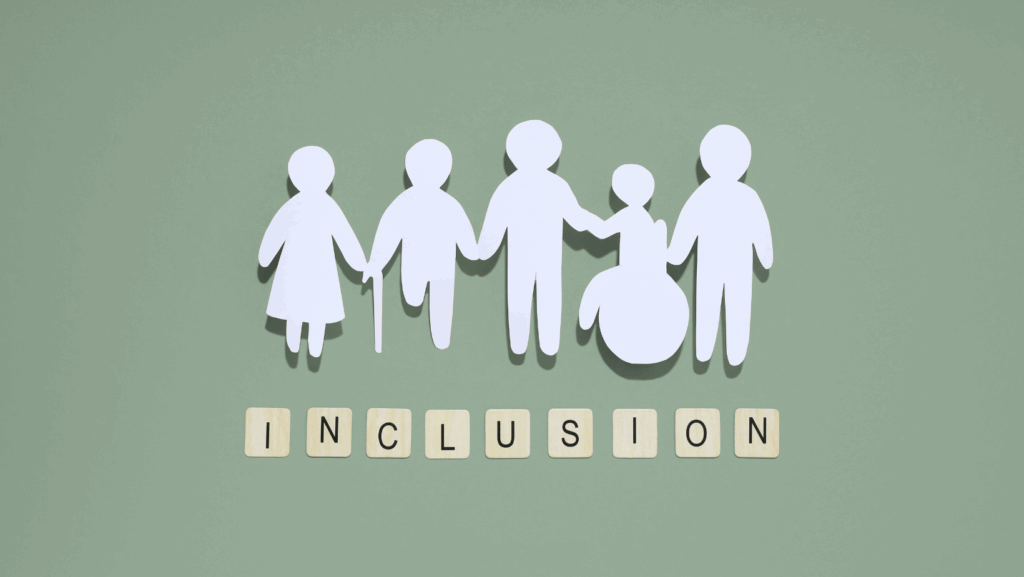
Inclusive Language for Job Adverts
In today’s competitive job market, attracting a diverse pool of candidates is more than just a trend – it’s a strategic necessity. And one of the most effective ways to ensure your hiring practices are inclusive is by scrutinising the language used in your job descriptions. Did you know for example, that men are more likely to apply for a job when they meet only 60% of the criteria, while women tend to apply only if they meet 100% of them?
At Grassroots, we rarely advertise the vacancies we’re recruiting. Most of the campaigns we deliver on behalf of our clients involve headhunting and targeted search to track down passive candidates with niche skills. However, we’ve recently been reviewing our job advertisements and candidate communications to ensure that we’re attracting a diverse workforce and implementing best practice as advocates of our clients’ employer brands.
We know that research consistently shows that subtle biases in wording can deter qualified individuals from underrepresented groups from applying, but we wanted to really understand what this means and why it’s the case. Along the way, we’ve discovered some surprising insights into how language impacts who applies for roles – and I wanted to share some of the insights we’ve uncovered.
The Impact of Language on Candidate Attraction
First up, we found a number of studies that demonstrated how certain words in job postings can influence the perception of a role’s suitability for different genders. For instance, terms like “determined” and “assertive” are often associated with male stereotypes, leading women to feel less inclined to apply. On the flip side, words such as “collaborative” and “supportive” tend to attract a more diverse applicant pool.
And it’s not just a gender thing. The language we use matters to all audiences and in a range of different contexts. It has the power to reinforce harmful misconceptions and stereotypes, or to show solidarity and help reframe the narrative around the communities, customers or candidates you work with.
If you’re looking for a complete list, they’re difficult to find, but here are some great sources we identified:
- North Devon Council’s Guide to Inclusive Language (not recruitment specific, but a great starting point)
- CIPD’s Inclusive Recruitment Guide (covers not just language, but best practice generally)
- How to write inclusive job descriptions with Maureen Brinkman (30-minute Podcast that’s well worth a listen)
- Ongig’s Blog on Inclusive Language when considering a range of biases (it’s not exhaustive, but gets you thinking)
How to Create Inclusive Job Adverts
To ensure your job postings are open to all candidates, here’s what we learnt you need to consider to follow best practices guidance:
- Use Inclusive Language for Skills and Attributes: Avoid potentially exclusionary language. Replace with words like “collaborative,” “innovative,” and “adaptable” that speak to the diverse skill sets that are important for a wide range of candidates.
- Emphasise Skills Over Credentials: Highlighting required skills rather than specific degrees or qualifications can open opportunities for candidates with non-traditional backgrounds.
- Avoid Unnecessary Jargon: Be aware that complex language can alienate non-native speakers and candidates from diverse backgrounds.
- Ensure Accessibility: Consider the readability of your job descriptions to accommodate individuals with dyslexia, neurodiversity, or other support needs. Tools like Grammarly can help assess the clarity and simplicity of your text, making it more accessible to a broader audience.
- Incorporate Clear, Inclusive Policies: Include a strong, publicly available inclusive hiring policy. For example, “We value diversity and are committed to building an inclusive environment where everyone has an equal opportunity to thrive.”
- Offer Flexibility: Emphasise flexible work arrangements, and be clear about how your company supports work-life balance. Showing that you value diverse working styles can attract a wider range of applicants, including those with family commitments, caring responsibilities or disabilities.
Finally, go beyond job postings. Ensure your inclusive language audit goes one step further than just your job descriptions. Review your interview questions, candidate communications, and internal recruitment documents to make sure they reflect the same inclusive principles.
AI Tools for Inclusive Hiring
The benefits of inclusive language go beyond attracting diverse candidates. Companies with diverse workforces tend to see better overall performance, increased employee satisfaction, and higher retention rates.
It is therefore worthwhile investing in some tech to help you (and many of you know about my passion for all things AI!). For larger firms, we found tools like Textio that seem to offer good functionality to analyse recruitment and HR documents and suggest more inclusive language choices. For SMEs, free tools like Diverse Talent’s Bias Buster are a great starting point.
Next Steps for HR and Hiring Managers
If I’ve piqued your interest and you want to review your own company’s job advertising or inclusive hiring processes, here’s how I’d recommend you get started:
- Audit Existing Job Descriptions: Review and update job postings to eliminate biased language.
- Train Hiring Teams: Seek out some training that will equip HR and hiring managers with the knowledge to recognise and mitigate unconscious bias.
- Monitor Outcomes: Track the diversity of your applicants and hires to assess the effectiveness of your inclusive language initiatives.
- Engage with Diverse Communities: Partner with organisations that support underrepresented groups to expand your recruitment reach.
If you’re interested in a deeper dive into your hiring processes or recommendations to experts from our Equal Futures EDI Networking Group that could help, I’d be happy to assist. Please get in touch if you’d like to chat over a coffee or arrange a more formal conversation to discuss how we could help.

